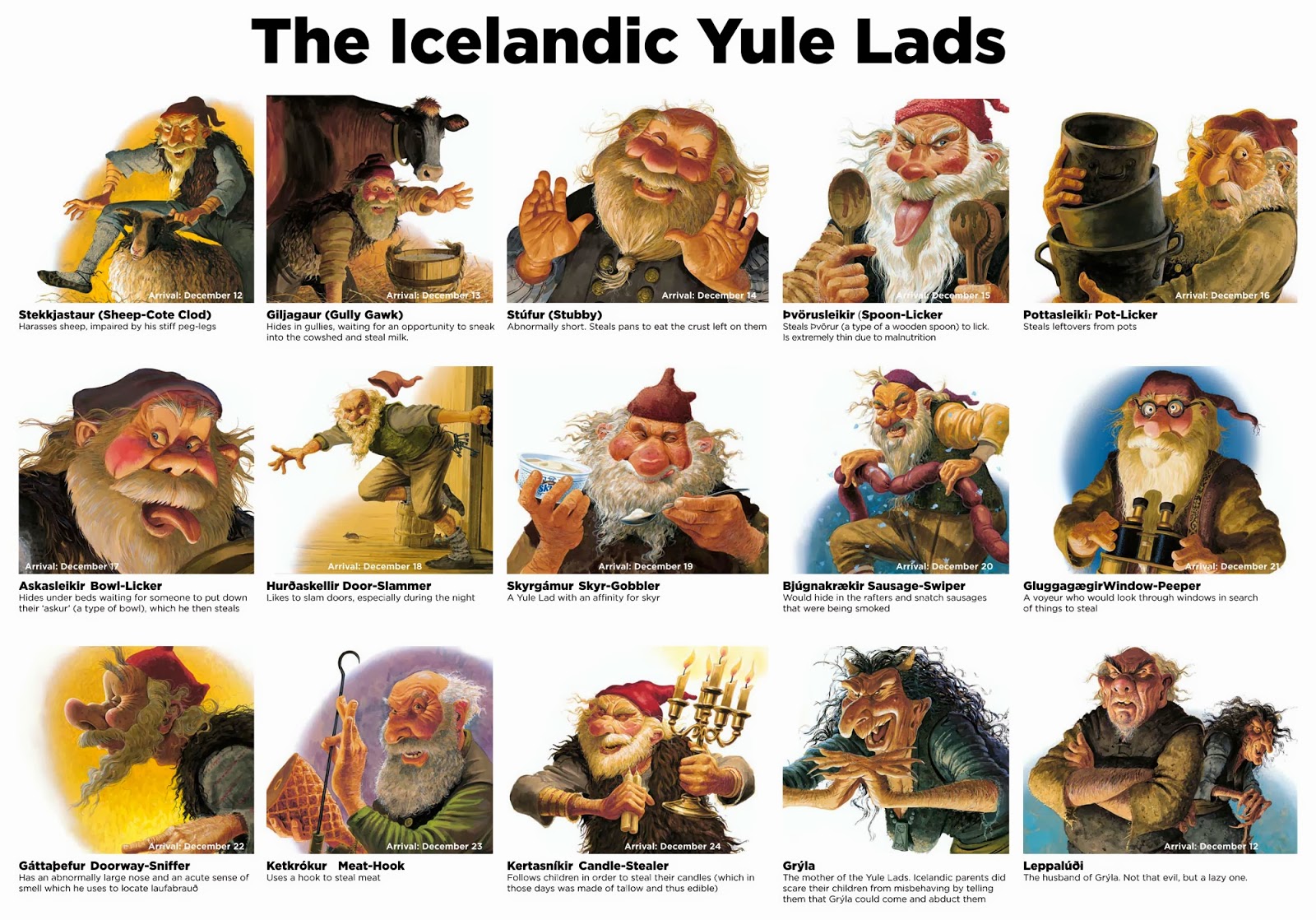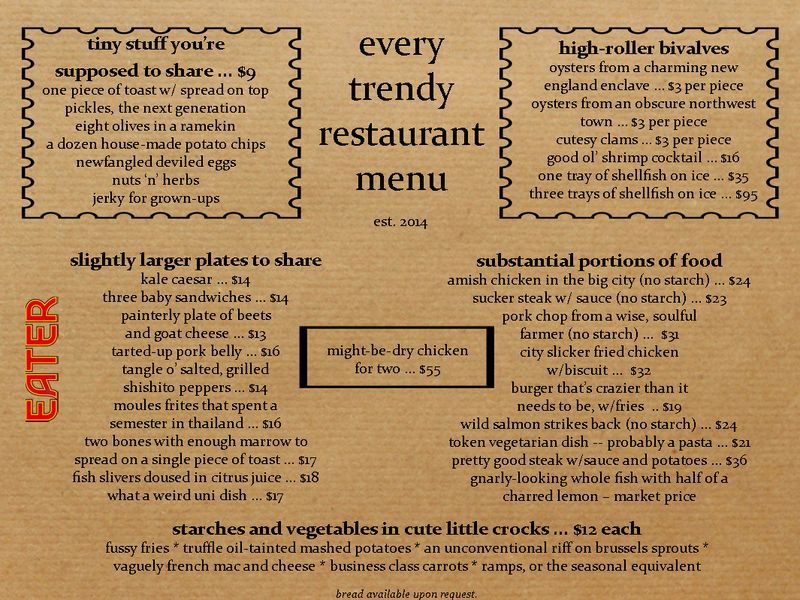
Housekeeping thing: a few copies of A Mess of Help sent out had lots of 5s in their tables of contents. Let us know if you got one of those, and we’ll send a new one.
1. As we’re getting into the Christmas spirit, The Economist makes a surprising contribution with a survey of the Magi’s reception history. Apparently the men were likely astrologers/sages of some sort, but people found kings more appealing. In medieval times, some strange theologians talk about massive royal retinues encamped outside Bethlehem, etc. And in other strains of the tradition, they were bumbling traveler types, something in between the Three Stooges and the Man Who Would Be King.
Beneath that theology of glory (mighty kings! untold wealth!) lies the possibility for something else – something T.S. Eliot tried to recover in his “Journey of the Magi”:
At the end we preferred to travel all night,
Sleeping in snatches,
With the voices singing in our ears, saying
That this was all folly……were we led all that way for
Birth or Death? There was a Birth, certainly,
We had evidence and no doubt. I had seen birth and death,
But had thought they were different; this Birth was
Hard and bitter agony for us, like Death, our death,
We returned to our places, these Kingdoms,
But no longer at ease here, in the old dispensation,
With an alien people clutching their gods.
I should be glad of another death.
But it seems the glory of kings and the then-mythical, legendary East have held more traction over the years than a more historically-grounded scholars/astrologers narrative or Eliot’s symbolic conversion/death-and-(sort-of-)resurrection paradigm. It’s all really interesting, and well-worth a read.
2. Sticking to the spirit for a little longer, the New Republic put out a great history of Christmas. The highlight for me would have to be the gradual elevation of Santa Claus to fill a void where sacred and secular has unmeshed, that story of disenchantment:
Since at least the 1890s, Santa has had some heavy metaphysical burdens to bear in his pack… Without Santa, “there would be no childlike faith then, no poetry, no romance to make tolerable this existence,” he argued. Like Edwards, Church affirmed that “the most real things in the world are those that neither children nor men can see”; like James, he admitted that without those things, life would be unbearable.
Church’s editorial nicely limned the religious dimensions of the modern Christmas, their weaknesses as well as their strengths. The association of Christmas with “childlike faith” reinforced the modern tendency to link religious belief with a touchingly naive but intellectually immature stage of personal and cultural development. It implicitly infantilized religious beliefs while explicitly exalting them. And it located them in a fondly remembered past of warmth and plenty. But a past it truly was. The childishness of Christmas made it a focus for an adult nostalgia that often had cosmic overtones: “out of the great bulk of the giving the soul has gone,” lamented the Sunday School Times in 1912, voicing a sentiment repeated endlessly before and since. Once, when we were children, things were different: Romantics have long assumed this…
Toys-R-Us is not the best place to recall it, but the American Protestant appropriation of Christmas may have been a revolt against the dualism of spirit and matter, an attempt to recover a more sacramental conception of the world. From such a perspective, the mystery of faith may not always be hidden by the mountains of things; it may also live, however infrequently and ineffably, in the things themselves.
It is interesting, though, that the Santa belief is (spoiler warning) not meant to last beyond a certain age. I would guess children have, at least for several centuries, been told stories they were only meant to believe for a time, and then grow out of. I suppose that rooting people in a sense of mystery is nice, but it’s also strange living in a world where that mystery, for most, starts to evaporate pretty quickly, now that various subdemons and wizards and things are mostly not believed in, and strange, uncharted lands are a thing of the past. As Charlotte Getz wrote Wednesday, though, the Santa thing (mostly one-way love, unless you put coals in your kids’ stockings) can later be mapped onto Christianity.
3. The Atlantic goes in for some low-hanging fruit with “Santa Claus and the Surveillance State“:
Instead, the elf [on the shelf] encourages children “to accept or even seek out external observation of their actions outside of their caregivers and familial structures.” And though the little guy is not, as hoax-busting website Snopes assured the Internet this week, secretly a popular program instituted by the NSA, he still normalizes “dangerous, uncritical acceptance of power structures.”…
“Theologically, Christmas functioned in part as a children’s version of judgment day,” Stephen Nissenbaum, author of The Battle for Christmas, told the Times. So is it any wonder that some kids freak out at the sight of Santa Claus? Or that, as Pinto and Nemorin write in their paper, some kids have taken to ringing their own doorbells to notify the Elf on the Shelf that they’re home.
It’s a long, long way from quasi-divine judgment to the surveillance state, but there is a point here about the accountability factor being overdone. It probably has more to do with our obsession with positive feedback than some Orwellian conspiracy. But the dark side of Christmas – the krampus, who kidnaps wicked children, and Iceland’s Gluggagægir, “trolls who come into homes and wreak myriad havoc in the days leading up to Christmas” – play a vital role. There is law and judgment and fear, which nicely sets grace into sharp relief. You do something naughty, and krampus doesn’t (presumably) carry you off to his krampus-lair, and somehow the holiday feast goes according to plan; the Gluggagægir are barely thwarted. I wonder how we made the transition from these agents of evil to an impartial, almost bureaucratic evaluator. It seems the old stories could hold menace and deliverance/joy together in a way we can’t any longer. What little menace there is has been relegated to the realm of performance-reports. That seems like a loss.
4. And in the Christmas grace in practice realm, this:
This week, a so-called “angel” went into a Toys ‘R’ Us in Bellingham, Mass., and paid off every open layaway account in the store. That $20,000 act of charity meant an early Christmas present for more 150 people…. Although the donor remains anonymous, The Milford Daily News reports she is a “bubbly older woman and a local” who said she will “sleep better at night” knowing the layaway purchases had been accounted for.
5. In humor, The Low Churchman’s Guide to the Solemn High Mass has ended its hiatus and is back in swing – as far as ecclesiological/Anglican/Catholic humor goes, it really doesn’t get better. Mallory Ortberg of The Toast imagines Ayn Rand reviewing children’s movies in an oft-cited New Yorker article this week, with a couple of highlights below:
“Lady and the Tramp”
A ridiculous movie. What could a restaurant owner possibly have to gain by giving away a perfectly good meal to dogs, when he could sell it at a reasonable price to human beings? A dog cannot pay for spaghetti, and payment is the only honest way to express appreciation for value. —One star….
“Willy Wonka & the Chocolate Factory”
An excellent movie. The obviously unfit individuals are winnowed out through a series of entrepreneurial tests and, in the end, an enterprising young boy receives a factory. I believe more movies should be made about enterprising young boys who are given factories. —Three and a half stars. (Half a star off for the grandparents, who are sponging off the labor of Charlie and his mother. If Grandpa Joe can dance, Grandpa Joe can work.)
Seriously, when it comes to contrasting the enchanted, spontaneous world we present to our children and the reciprocal, give-and-take world many of us live in, this works well. On the subject of Rand, it’s impossible not to mention the A.V. Club’s hilarious commentary on the use of kickstarter to promote Randian ideology, here. Also in humor, eater.com shares the menu of every trendy restaurant – looks like those pickled ramps aren’t quite as unique as I thought.
6. Slate.com has been on a roll lately; their stepping-back from the precipice of political pandering is something we’re all benefiting from. The latest diagnoses 2014 as “A Year of Outrage”, documenting the now-familiar news cycle from righteous indignation to amnesiac nonchalance. (If one were scorekeeping, Slate’s been leading the righteous outrage for most of the last couple years, but luckily the books are closed.) Respect to Slate for acknowledging their own role in it, and the insights are dead-on. The material comes from different writers, but I’m quoting it all together below. Seriously, check out the original – probably a must-read, and an overdue correction:
These conditions are hardly new. Over the past decade or so, outrage has become the default mode for politicians, pundits, critics and, with the rise of social media, the rest of us. When something outrageous happens—when a posh London block installs anti-homeless spikes, or when Khloé Kardashian wears a Native American headdress, or, for that matter, when we read the horrifying details in the Senate’s torture report—it’s easy to anticipate the cycle that follows: anger, sarcasm, recrimination, piling on; defenses and counterattacks; anger at the anger, disdain for the outraged; sometimes, an apology … and on to the next. Twitter and Facebook make it easier than ever to participate from home. And the same cycle occurs regardless of the gravity of the offense, which can make each outrage feel forgettable, replaceable. The bottomlessness of our rage has a numbing effect…
You are speaking, first, into the echo chamber of your friends. But not everyone is in your silo. And so then some stranger is mad at you; then some friend is noticeably silent. You are blocked or you are yelled at. Spiraling conversations come from realms unexpected and unwanted. You are embarrassed, or you are angrier, defensive or passive-aggressive, or laughing at them all. It is a rush of emotion that stretches long but is only an instant. Then, with a slithery zip, the moment is sealed shut.
That cycle is replicating itself now all around you in spheres you cannot even see—sometimes identically, sometimes in the reverse. (“So glad Lena Dunham stood up to those bullies!” “How dare that molester show her face!”) It’s rippling over and over throughout this huge grab bag of plastic bubble wrap sheets that we each think of as our private digital home….
All of this raises a question: If nothing comes from the outrage, what was the point?
It feels good to express disgust, of course, and when that comes with social affirmation—favorites, retweets, followers, blog posts—there’s an incentive to show more anger. But I think there’s more to it than that. In a world where prejudice and privilege still rule the day, it’s cathartic for a lot of lefties—even straight white dudes—to show outrage, even if it leads to nothing in particular. By raging against something like Colbert’s joke, you can voice your anger at the status quo, which, in the past year especially, seems to have frozen in place. And with a simple retweet, you can signify just what camp you’re in. In a sense, for the social-media left, cultural outrage is a substitute for politics.
See especially Jordan Weissmann’s confessional piece on some of his outraged clickbait hits. Articles like this help to put a brake on the spiral of righteousness which, at a fundamental level, fuels the indignation. It’s a courageous piece to write, for Weissmann in particular and Slate in general,
7. Andrew Sullivan’s blog, The Dish, has been great all-around lately (Will Wilkinson’s been great this week), and last night they commented on David Zahl’s book/Mbird’s latest, A Mess of Help. Pick it up here.
Bonus: The Millions posted a worthy reflection on a guy’s decision to become a writer rather than a priest, ht KW; the Sapping Attention blog does some cool digital humanities work in analyzing TV plot arcs; the Morphosis blog reflects on a Chestertonian veiled-glory/least-of-these thing in Harry Potter; someone filmed a genuinely cute Christmas pageant with kids (below); and circling back to the righteous indignation thing, love trumps judgment/ideology on C-SPAN (next below). Happy Christmas!

COMMENTS
Leave a Reply
















